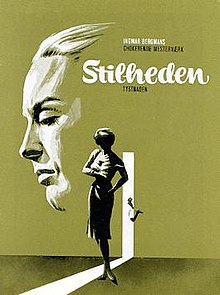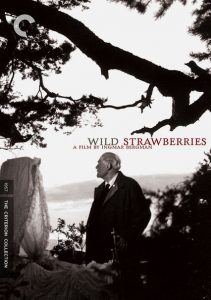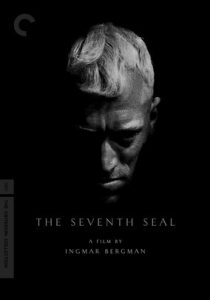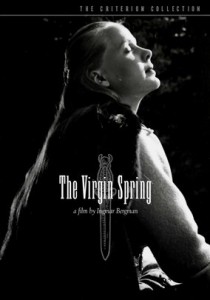The Silence-1963
Director Ingmar Bergman
Starring Gunnel Lindblom, Ingrid Thulin
Scott’s Review #1,435
Reviewed July 28, 2024
Grade: A
Like most Ingmar Bergman films, careful concentration is highly recommended. Consistently in the art film genre, his films are rich with substance and deep thought. Being alert and focused makes his films most rewarding.
The Silence (1963) is not one of his best-known films, taking a backseat to The Seventh Seal (1957), The Virgin Spring (1960), and Wild Strawberries (1963), three of his more recognizable works.
It is no slouch and is quite excellent resembling Persona (1966) a Bergman film yet to be released.
The Silence is sometimes considered the third film in a trilogy that includes Through a Glass Darkly (1961) and Winter Light (1963). The trilogy focuses on spiritual issues, but the films need not be watched sequentially.
His films often center on one character caring for another character who is brewing anger, conflict, or self-reflection about life, death, and the existence of God.
Traveling through an unnamed European country on the brink of war, sickly, intellectual Ester (Ingrid Thulin), her sister Anna (Gunnel Lindblom), and Anna’s young son, Johan (Jorgen Lindstrom), check into a near-empty hotel for shelter.
Even though Ester is a linguist, they cannot verbally communicate with the locals. They also have trouble communicating with each other due to their estrangement.
Anna provokes her sister by enjoying a dalliance with a local waiter, while Johan, left to himself, has a series of strange encounters that heighten their growing isolation.
There is also an elderly hotel porter and a group of Spanish dwarfs who are part of a traveling show.
One gorgeous scene occurs when Anna ventures into the city alone and is openly advanced by a waiter in a cafe. He places her change on the table and knocks a coin to the floor. When he crouches down to retrieve it, he quickly brushes her leg.
Later, she watches a show in an uncrowded theatre and is both repelled and fascinated when a young couple begins to have sex in a seat nearby.
Anna returns to the cafe, brushes past the waiter, and returns to the hotel.
The scenes exude sexuality since Anna is cautiously but certainly on the prowl for sex. She and the unnamed waiter have an instant, animalistic attraction that smolders onscreen.
Some say the relationship between Anna and Ester can be interpreted as a push and pull between the same person. That impacts me as much as two separate people, and I kept thinking about this point throughout the film.
Bergman incorporates several shots of the two women either side by side or their faces very close. This enhances the idea that they could be one person with deep psychological conflict.
There is no question that The Silence was influential to other films to come. Three Women (1977) and Mulholland Drive (2001) immediately come to mind since both delve into cerebral and dreamlike relationships between two women.
The film is shot in black and white like most, if not all, of his other films. This creates a stark mood and supports the conflict in the storyline, especially Ester’s illness.
Furthermore, because of the language barrier and emotional drama, there is little dialogue, making the film almost like a silent movie.
It’s an incredible work with familiar storylines created by Bergman that question the complexity of relationships, thoughts, and emotions.
I was left with the message from The Silence (1963) that human beings are incredibly complex, and it’s terrific that it’s explored in cinema.
Thanks to ownership of a robust Criterion Collection set of thirty-nine of Bergman’s films, I look forward to seeing more of the brilliant Swedish director’s works.



